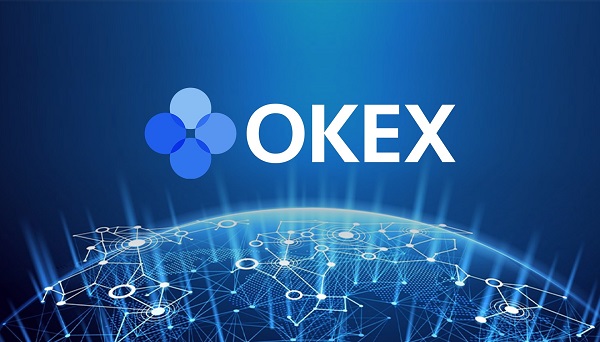
The following is a guest post and opinion from Felix Xu, Founder of ARPA Network.
Walk into any of Cloudflare’s global offices and you’ll find some unusual decor. In San Francisco, it’s floor-to-ceiling lava lamps, known as “the wall of entropy.” In London, it’s the “unpredictable pendulums.” These aren’t just pretty backdrops—they are grist for the randomness mill, exemplifying the ongoing creative and engineering race for true randomness.
Randomness is the unsung hero of the modern internet—the cornerstone of encryption, the backbone of fair gaming systems, and increasingly, a critical component in AI verification. Yet, as we hurtle toward a future where crypto represents a growing share of the global economy and AI agents gain greater autonomy—particularly over financial operations—the integrity of randomness becomes not just a technical concern but an existential one.
The Myth of Perfect Randomness
Computer scientists have long sought an idealized version of randomness, embodied by the theoretical “random oracle,” a hypothetical black box providing truly unpredictable outputs for every input. Unfortunately, perfect randomness is practically unattainable. Instead, digital systems rely on pseudorandom functions—sophisticated algorithms designed to simulate randomness convincingly. Physical entropy sources, such as Cloudflare’s “wall of entropy” lava lamps or London’s unpredictable pendulums, serve as essential real-world seeds for these pseudorandom functions, introducing genuine unpredictability from natural phenomena into cryptographic processes.
Yet, this blend of physical entropy and pseudorandom algorithms isn’t foolproof. As MIT computer science professor Steve Ward points out, knowing an algorithm and its initial seed can enable prediction of supposedly random outcomes—such as the next card dealt in online poker. Such vulnerabilities underscore the critical importance of genuinely unpredictable and verifiable randomness in technology-dependent contexts, from digital gaming to financial security.
Verifiable Randomness in AI
Artificial Intelligence systems increasingly rely on randomness to ensure fair, unbiased, and robust outcomes, playing an indispensable role across diverse applications—from healthcare diagnostics to financial decision-making. Randomness helps AI models avoid overfitting by introducing necessary variability into training processes, making predictions and decisions more adaptable and reflective of real-world scenarios. However, when randomness is not verifiable, it becomes impossible to ensure that AI-generated outcomes are genuinely impartial and resistant to hidden biases.
Take, for example, AI-driven financial trading algorithms. These systems utilize randomness to explore various investment scenarios and prevent predictable exploitation. However, without transparent and verifiable randomness, financial institutions and regulators cannot confirm that the model’s decisions are truly unbiased. The integrity of randomness directly influences market fairness, as hidden biases could disproportionately favor certain assets or market participants.
Similarly, in generative AI applications such as language models, image generation, or personalized recommendations, the randomness parameter—known as “temperature”—profoundly affects output quality. A low temperature generates consistent yet potentially repetitive outputs, while higher temperatures introduce greater variability but risk unpredictable and unreliable responses. Without verifiable randomness, users and stakeholders cannot confirm that the model’s claimed temperature settings accurately reflect actual operational conditions—creating opportunities for covert biases and subtle manipulation.
Moreover, AI systems used in critical decision-making scenarios—such as autonomous driving or medical diagnosis—must reliably produce unbiased, equitable outcomes. Verifiable randomness ensures stakeholders can independently verify these systems’ fairness, significantly boosting public trust and regulatory compliance.
The Importance of Verifiable Randomness Functions (VRFs)
At its core, verifiable randomness addresses a fundamental paradox in our digital systems: how do we create unpredictability that can nevertheless be trusted? Verifiable randomness rests upon three pillars:
Unpredictability: The generated values cannot be anticipated in advance, even by the system’s creators or operators.Bias-resistance: The output distribution contains no detectable patterns or skews that could be exploited.Public verifiability: Anyone can independently confirm that the random values were generated according to the specified protocol, without requiring access to secret information.
Public verifiability distinguishes verifiable randomness from traditional random number generation. It creates a bridge between the necessary chaos of true randomness and the transparency required for trust. It may sound dramatic, but without that trust, insiders could rig AI algorithms and crypto platforms in their favor—plunging our civilization into a technological dark age.
Toward Decentralized Verifiable Randomness
Likewise, in blockchain systems, randomness underpins critical functions including validator selection, transaction ordering, and token distribution. When Ethereum selects validators for block production or when NFT platforms determine rare trait distribution, randomness decides outcomes worth billions. Any manipulation could allow malicious actors to gain unfair advantages, potentially undermining the entire industry.
The “stakes” (no pun intended) are particularly high in Proof-of-Stake systems, where validators are selected probabilistically. If validator selection becomes predictable or manipulable, attackers could corrupt the network by front-running blocks. Similarly, in DeFi, predictable randomness enables flash loan attacks and market manipulations that drain liquidity pools.
The ideal solution combines true randomness with decentralized verification—distributed networks generating collective randomness where no single entity controls the outcome, yet everyone can verify its integrity.
The Path Forward: Embracing Verifiable Randomness
As we entrust AI systems with greater autonomy and responsibility, verifiable randomness becomes not just a technical challenge but a foundational requirement for trusted systems. Organizations developing AI agents must prioritize verifiable randomness before shipping code—or risk catastrophe.
The technology industry stands at a crossroads. We can continue building AI systems and offloading more capital to crypto-systems on the shaky foundation of conventional randomness and opaque decision processes—or we can embrace verifiable randomness as part of a broader commitment to transparency and trust.
Without verifiable randomness, we’re building our future on digital quicksand. With it, we have the conditions for a flourishing future—where our technological superpowers work with us, not against us.





Be the first to comment